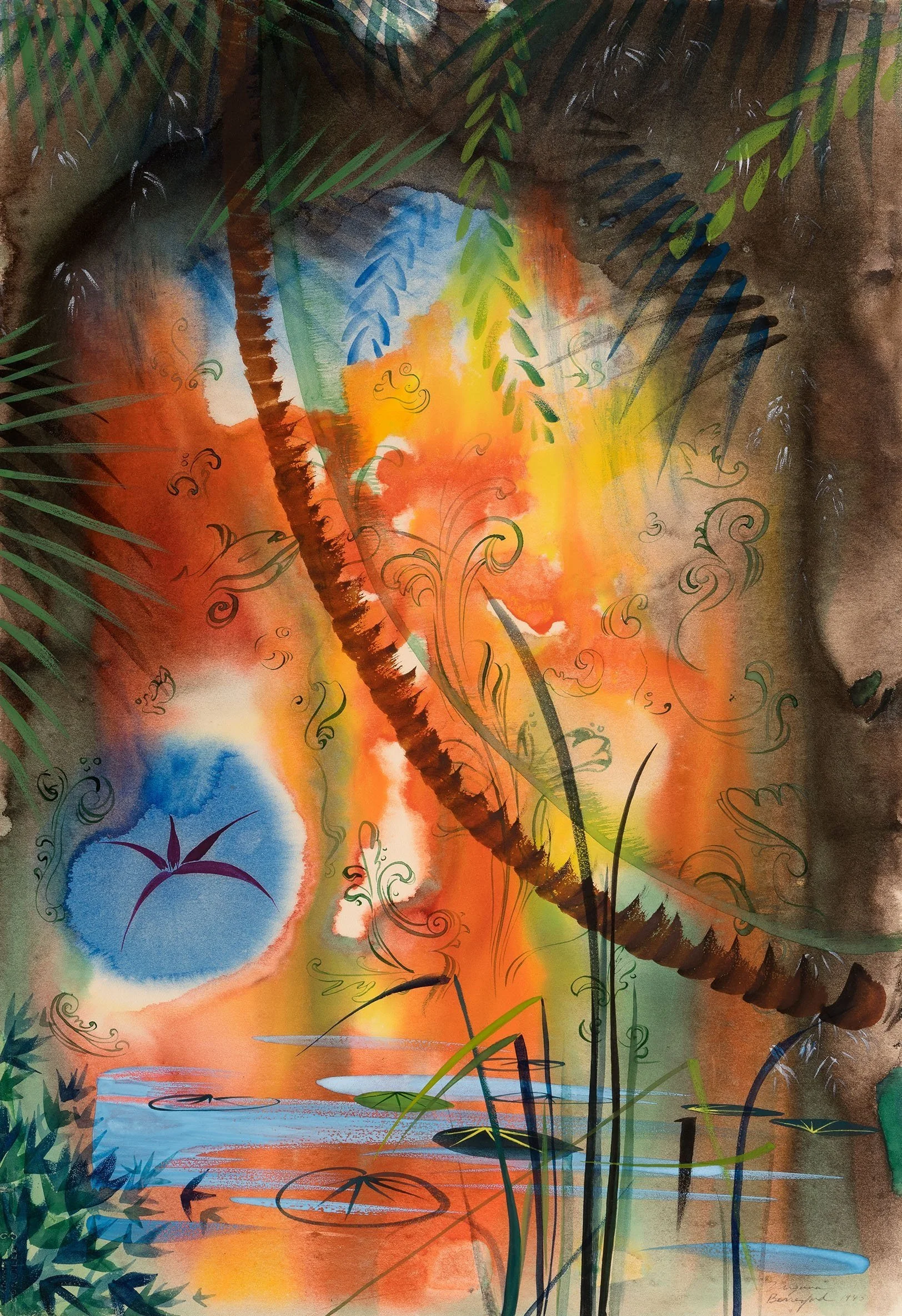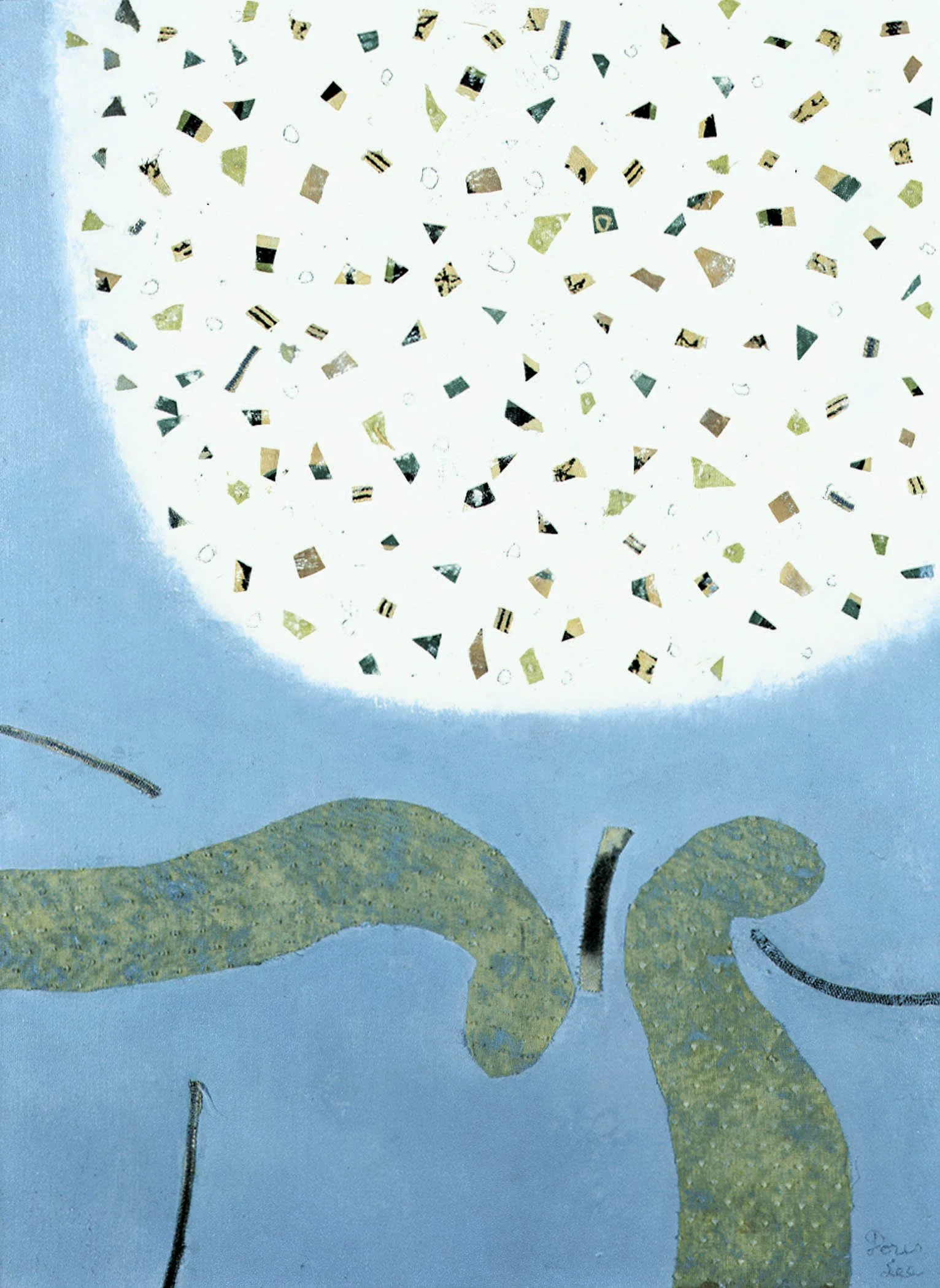Nov 30, 2017- Feb 22, 2018
Essay | Some works may still be available, please contact the gallery at 212-581-1657
Essay by Deedee Wigmore
This exhibition presents images of Florida by some of the women artists who visited Florida and recorded their impressions in the 20th century. The artists were attracted to Florida’s profound beauty and idyllic weather. The gallery’s focused exhibition on women artists’ contributions is just a taste of the larger efforts of curator Jennifer Hardin who is revisiting and reviving 20th century Florida art in the upcoming exhibition Imagining Florida: History and Myth in the Sunshine State to be held at the Boca Raton Museum of Art, November 13, 2018- March 24, 2019.
One of the artists in our exhibition, Sally Michel (1902-2003), spent the winters of 1949-50 and 1950-51 in Florida at the Research Studio in Maitland. Her husband Milton Avery was recovering from a major heart attack and his physician suggested that Milton spend the winter in a warmer climate. Michel arranged for Avery to receive a Bok Fellowship at the Research Studio, where he joined fellow artists-in-residence Minna Citron (1896-1991), Doris Lee (1904-1983) and her husband Arnold Blanch (1896-1968). While Avery focused on monoprints, Michel painted scenes of the exotic flora and fauna she encountered in the Maitland area. A charming example is Cows in Marsh, c.1951 where Michel has dotted the waterways of the area’s lakes with familiar Holsteins.
Many artists from the Woodstock, New York art colony were influenced by the glowing descriptions of fellow artists to visit Florida. Zulma Steele (1881-1983) was the first woman artist to live at Byrdcliffe, the Arts and Crafts colony located in Woodstock. There she designed oak furniture and painted landscapes from 1903 to 1909 when the colony was most active, then continued to teach art classes on the Byrdcliffe campus each summer through the early Twenties. The three panel Florida Landscape with original artist-made frame was executed in the 1920s and hung in Steele’s Woodstock home.
Doris Lee first went to Florida in 1934 and returned every winter. Each year after Thanksgiving, Lee would leave Woodstock and drive to Florida with her husband Arnold Blanch, who taught art across Florida while Lee painted. Lee was a charter member of the Clearwater Art Club, formed in February of 1935. Committed to the area, Lee received a solo exhibition in 1951 at the Florida Gulf Coast Art Center, formed in 1948 when the Clearwater Art Museum, the Museum Art School and other nearby art organizations joined together. While Lee remained connected to Clearwater, eventually retiring there in the 1960s, she and Blanch traveled throughout Florida. The two exhibited in WPA-sponsored art exhibitions in Key West in the 1930s. The programs was a success and Key West became a draw for many artists by the 1940s. According to Tennessee Williams’ memoir, Lee and Blanch were joined by Williams, Grant Wood, and Yasuo Kuniyoshi in the winter of 1941-1942. Our exhibition offers several Key West scenes by Lee executed in gouache. Helicopter over Key West, Seashell Vendors, and Souvenirs, Key West were all exhibited in Lee’s exhibitions at Associated American Artists in New York through the 1940s and 1950s. While in South Florida, Lee often visited the Everglades and was interested in the remaining Seminole tribes that lived along its edge. Seminole artistic traditions of embroidering beadwork and hand woven patchwork on clothing are noted by Lee in her Seminole Indians in the Everglades, a painting of two Seminole women in traditional dress returning from market in their canoe. A 1946 Life Magazine commission led Lee to travel around the Gulf of Mexico by car to create images of the area for an article on the Pan-American Highway, published in May of 1947. One of the paintings for that commission titled Sailing off the Gulf of Mexico is in our exhibition. In the painting Lee conveys Florida’s unique land shape as the only peninsula and subtropical area in the continental United States.
Jane Peterson (1876-1965) first visited Florida in 1918 when she organized the Palm Beach Country Art Club, which later became the Palm Beach Art League. In 1925 then nearing her fiftieth birthday, Peterson married a successful corporate lawyer, Bernard Philipp. During this marriage Peterson began to paint flowers both as portraits and still life compositions. Bernard Philipp died in 1929 leaving Peterson a rich woman. This allowed her to travel; spending summers in Europe or Ipswich, Massachusetts, spring in New York and winters on the Riviera or in Palm Beach. The painting in our exhibition Hibiscus depicts a flower commonly seen in Florida landscapes.
Virginia Berresford (1904-1995) first visited Florida in 1932 with her husband Ben Thielen. Her first winter in Florida resulted in an oil painting Tropic Island, 1934 which was included in Berresford’s 1936 solo exhibition at New York’s Walker Art Gallery, as well as in our exhibition. Berresford wrote in her journal, “In Key West I got the idea of breaking loose from my usual severe painting style, partly Ozenfant inspired; I loosened up, went into watercolor, used daring free strokes and bright colors.” [Virginia’s Journal, an Autobiography of an Artist, p. 41]. Berresford’s first solo exhibition of watercolors was held in New York at the Marie Sterner Gallery in 1938. Some of the other notable New York galleries that exhibited Berresford’s art were Mortimer Levitt, Bonstell Gallery, Bodley Gallery and Jacques Seligmann Gallery. Our exhibition includes nine of these Florida watercolors. Winters in Key West became a regular thing. Berresford’s journal records her bone fishing and sailing to Sand Key and driving to Palm Beach for lunch at the Everglades Club. In 1943 Berresford’s husband Bernard Thielen was commissioned a Lieutenant Commander in the navy and stationed in Miami. The couple rented a house in Coconut Grove, a roomy Spanish-style house in tropical garden scenery. There Berresford used her bedroom as a studio and taught watercolor techniques to soldiers at Miami Hospital for the Red Cross. When the war ended in 1945, Ben Thielen was dismissed from the Navy and the couple returned to Key West for the winter of 1946. In 1948 Berresford ended her marriage to Ben Thielen and her time in Florida.
[ TOP ]
Modernism 1913-1950 | Realism of the 1930s and 1940s | Abstraction of the 1930s and 1940s | Post-War | Selected Biographies




















